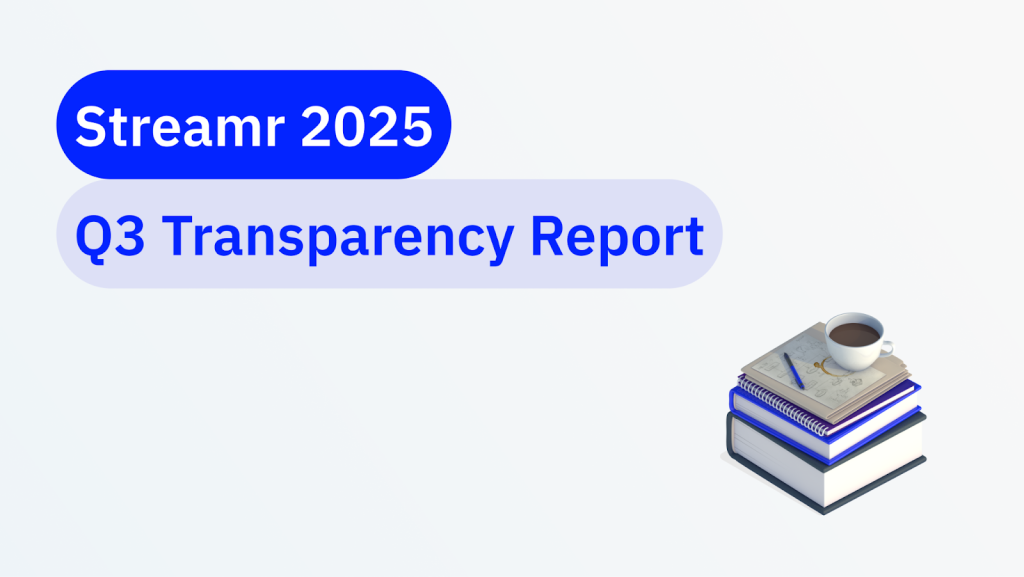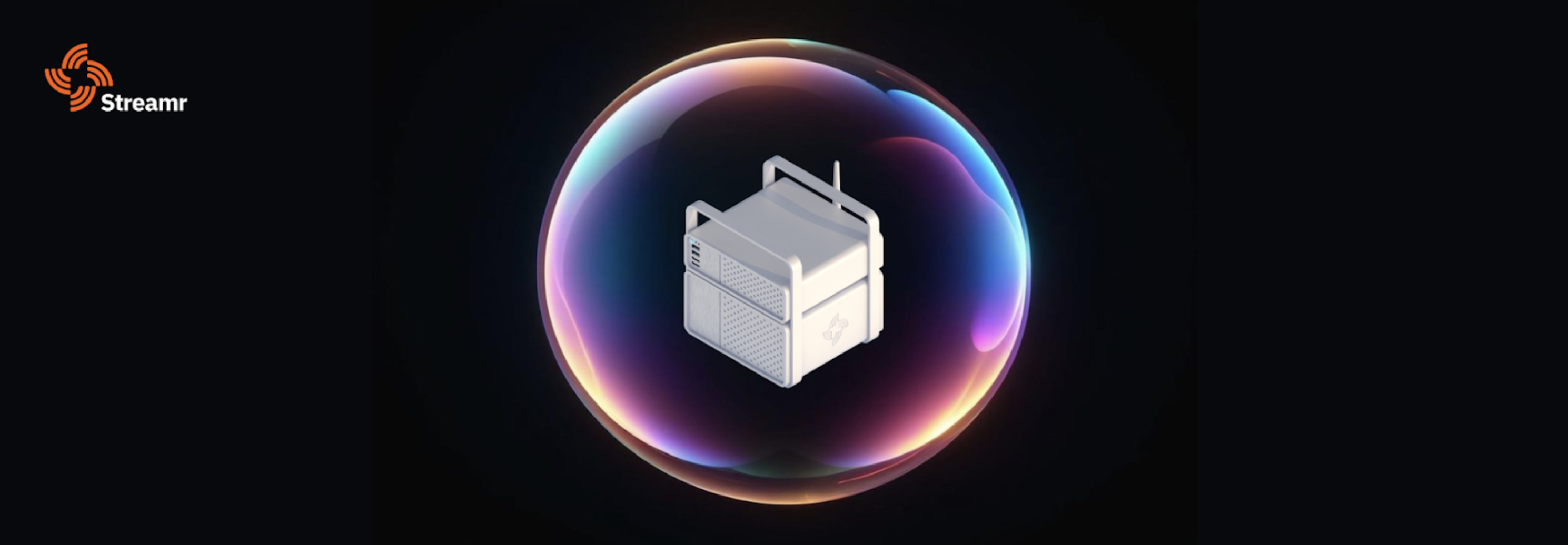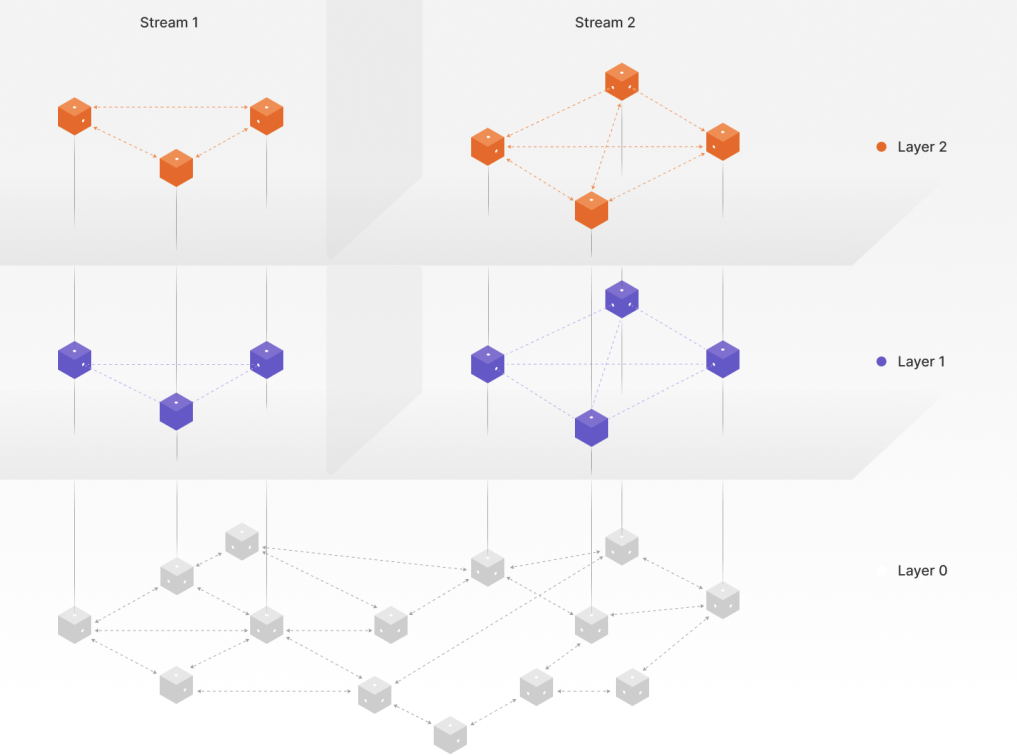We asked, you responded, let’s take a look at the results and learnings from the 2022 Streamr community survey. I will discuss the findings and suggest some practical takeaways for Streamr—primarily with regard to marketing and communication.
62 people responded to the survey, so the results should be treated with some limitation.
Table of Contents
- Questions 1. & 2. Where, and when did you first learn about Streamr?
- Question 3. On which channels do you regularly engage with Streamr content or the community?
- Question 4. Please rank the following in order by how much they interest you
- Question 5. How would you describe Streamr to a friend?
- Questions 6. & 7. What topics and content formats would you like to see more of from Streamr marketing?
- Question 8. Please rank the following topics by how much they interest you
- Question 9. What do you like most about Streamr?
- Question 10. What do you dislike, or what would you like to see Streamr do differently?
- Question 11. What’s your professional background?
- Question 12. What country do you live in?
- Question 13. Anything else you’d like to share with us or give feedback on?
- Main takeaways
Questions 1. & 2. Where, and when did you first learn about Streamr?
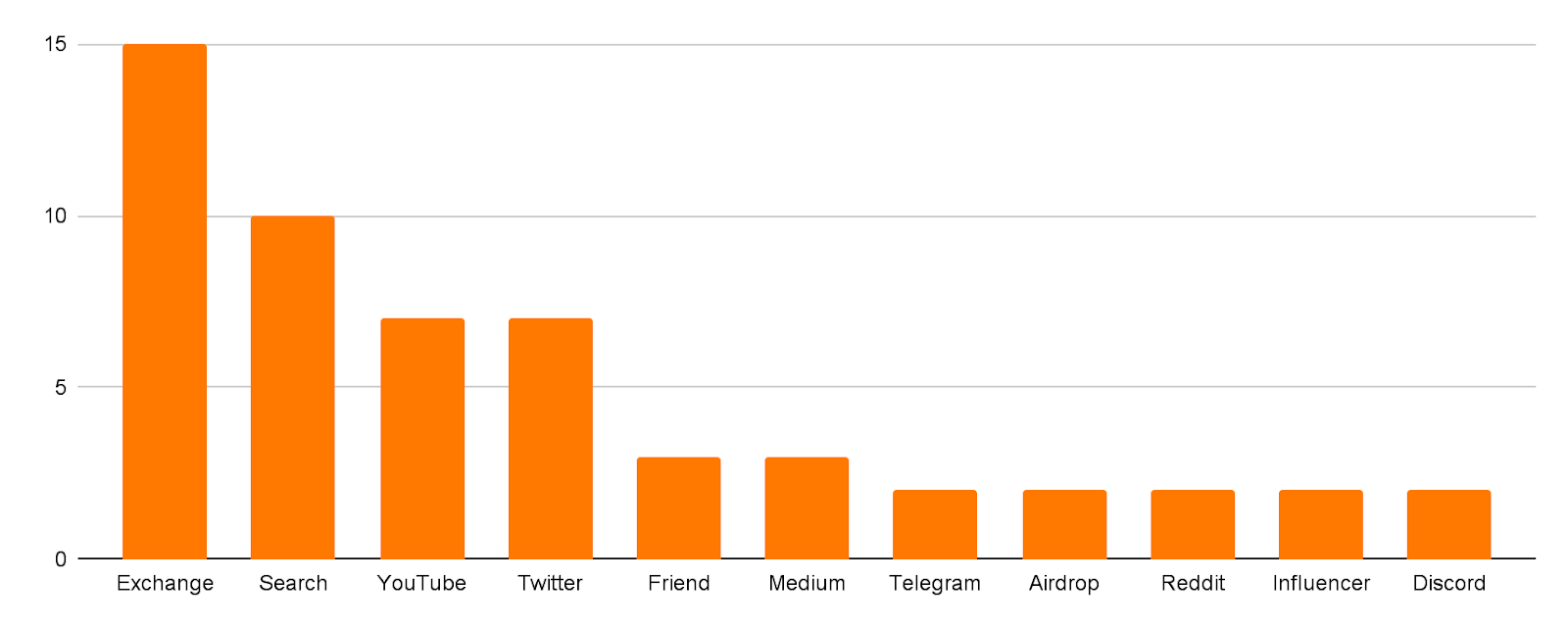
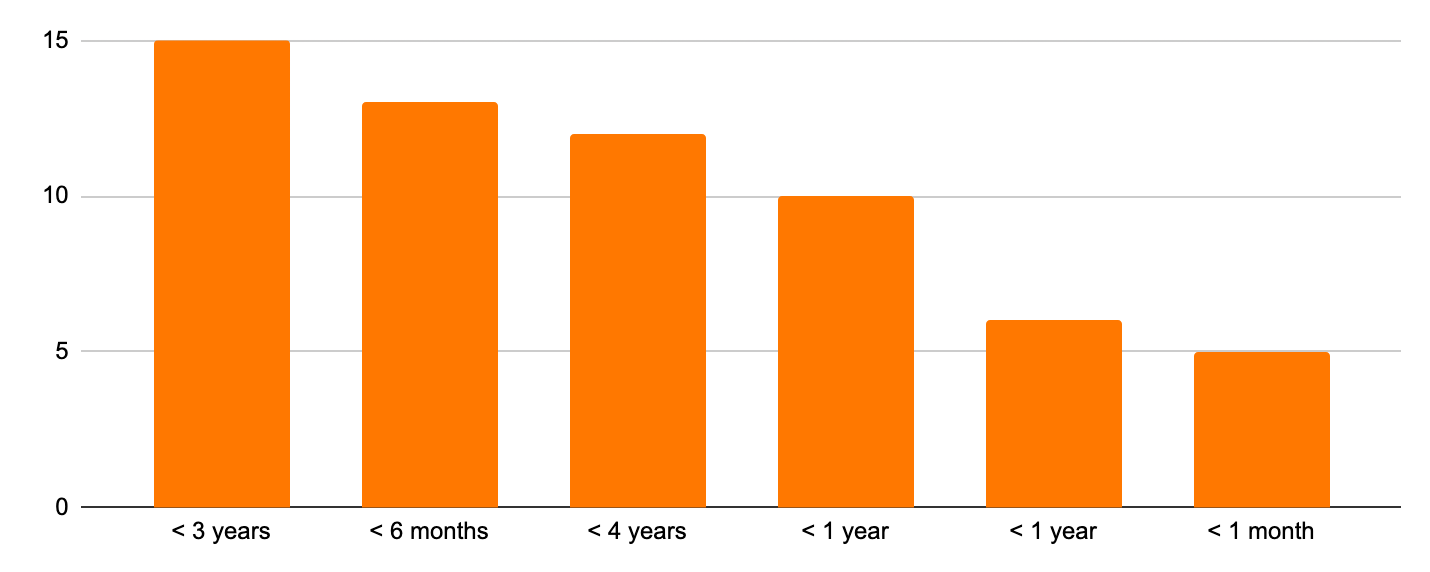
Discovery through exchanges and token listing websites were the most common avenues for first learning about Streamr. Among these responders, “CoinMarketCap”, “Binance”, and “Bitfinex” were respectively the most popular answers, with a relatively even split. Bitfinex and Binance tended to be the answers from longer time community members (3 to 4 years).
The second most popular channel for discovery was a general search. Few details were given about specific search terms (with one exception: “I was searching for decentralised data solutions”), but this highlights the importance of good SEO to promote discoverability.
Next up were outward facing communication channels “YouTube” and “Twitter”. The YouTube answers may indicate a mix of Streamr hosted content as well as external channels and influencers. This underscores the importance of YouTube and suggests it should be on par with Twitter in terms of marketing attention.
It may also suggest a greater output of video rather than blog content could be valuable for discovery, as Medium held less than half the responses of YouTube. However, Medium may also be counted among the “search” answers, so this conclusion is not concrete.
Finally, more inward facing community channels “Telegram”, “Reddit”, and “Discord” saw limited responses individually for discovery, but taken together, they are close in significance to YouTube and Twitter.
Question 3. On which channels do you regularly engage with Streamr content or the community?
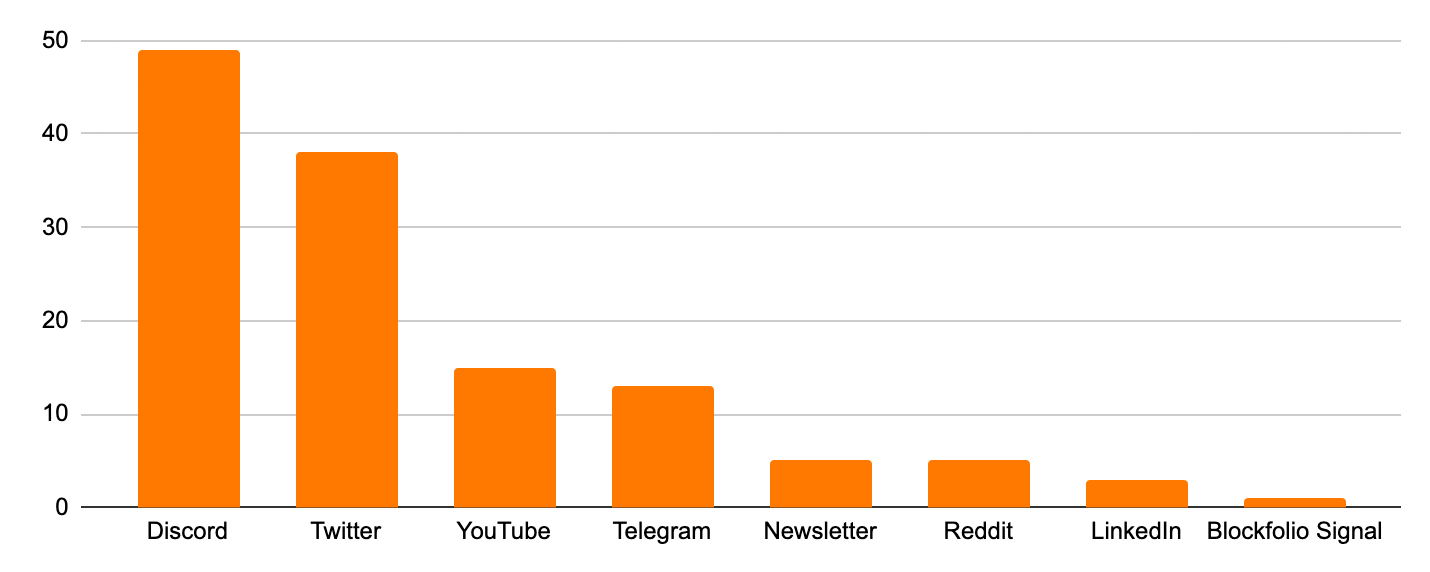
No surprises here that Discord is the first choice for engagement since our pivot away from Telegram for the primary community channel and place to support running Streamr nodes.
Twitter continues to be an important tool for sharing news and engaging with the community, as well as discovery.
Interestingly, YouTube held significantly fewer responses here than Twitter despite being on par with Twitter for discovery. This may be due to it currently receiving less attention from the team, but might suggest content on YouTube should be tailored more to discovery than engagement (tutorials and evergreen content rather than AMAs and updates).
Another takeaway is the low prominence given to the newsletter despite monthly updates. It may be that the content needs revisiting, or this format does not appeal to the community.
Question 4. Please rank the following in order by how much they interest you
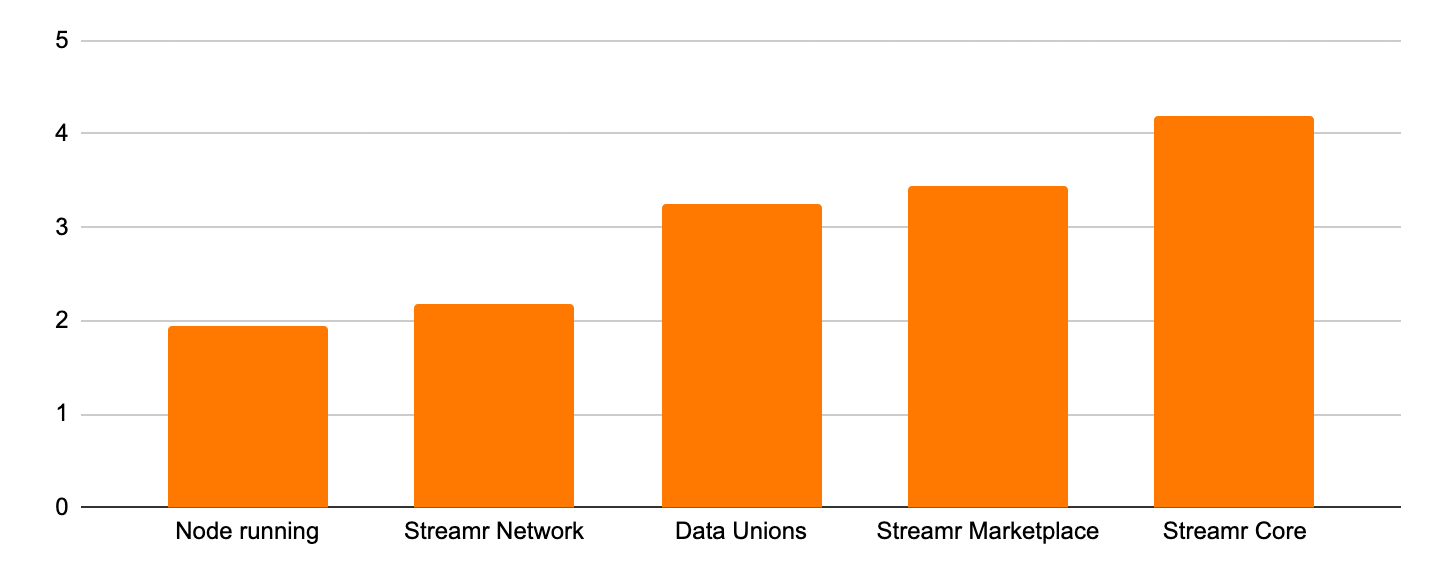
“Node running” and the “Streamr Network” were ranked first in similar numbers by the community. This is not surprising as Node running has received significant recent attention as a call to action and communication topic along with the Network, which is the central offering of Streamr.
“Data Unions” and the “Marketplace” have moved down in ranking from the last community survey conducted in 2020, in which they ranked first. At the time of the last survey, Data Unions featured more heavily in Streamr communication, which might explain this.
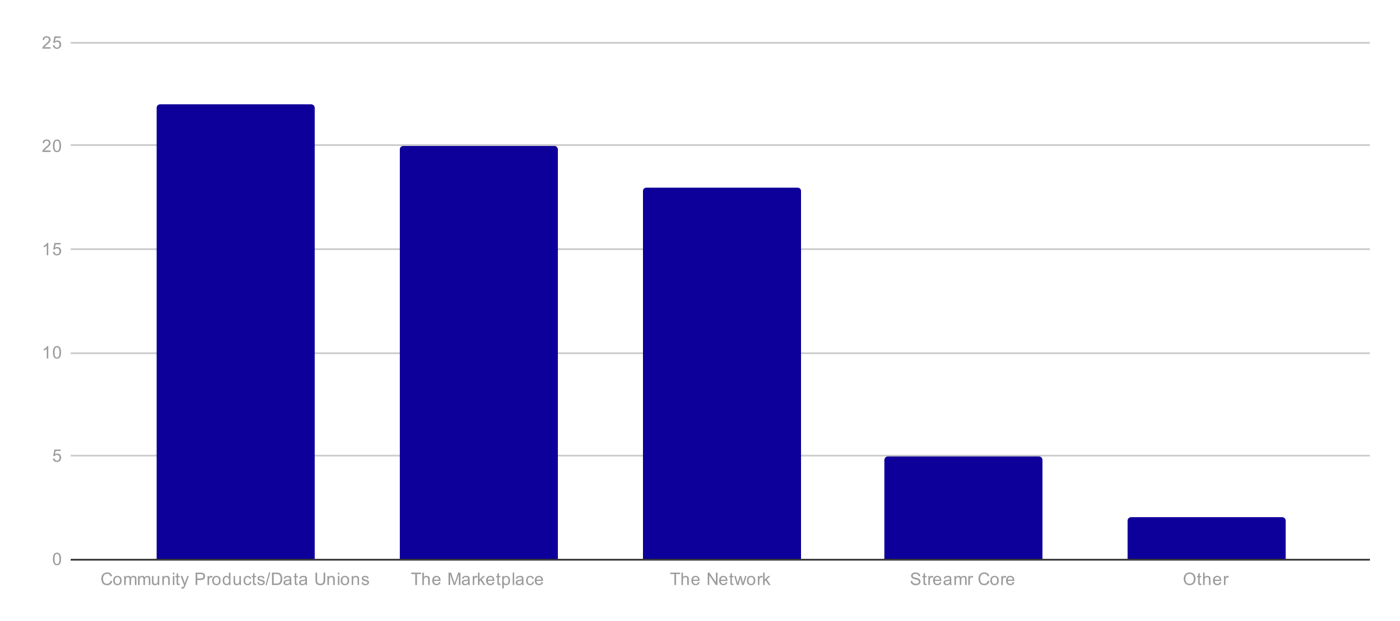
Question 5. How would you describe Streamr to a friend?
Streamr can sometimes be a difficult project to communicate succinctly due to its technical nature and the variety of use cases such as generalised messaging, open data and data monetisation. We’re pleased to see that the community is understanding that the Network offers a diversity of use cases in Web3 that can leverage our decentralized messaging stack.
Here are a few of our favourites:
“Decentralized P2P network with real time data transport and pubsub system”
“A decentalized pub/sub data network that allows for truly decentralized applications”
“Layer 0 network that will enable decentralised sharing of data and monetisation of said data for the end-user.”
“A decentralized p2p real-time data network to make data transport secure and uncensorable. Giving back power to the people.”
“The Apache Kafka of Web3…but distributed…”
These answers are in contrast to the 2020 community survey, where participants chose to highlight the data monetisation features more than the Network.

Questions 6. & 7. What topics and content formats would you like to see more of from Streamr marketing?
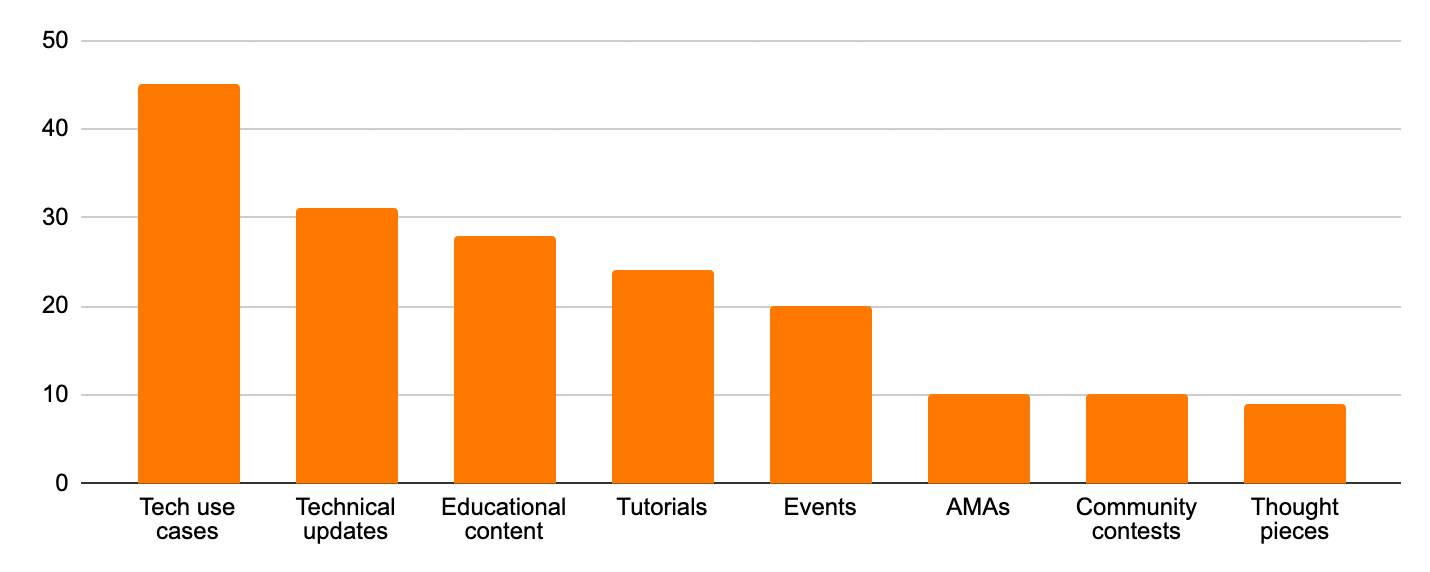
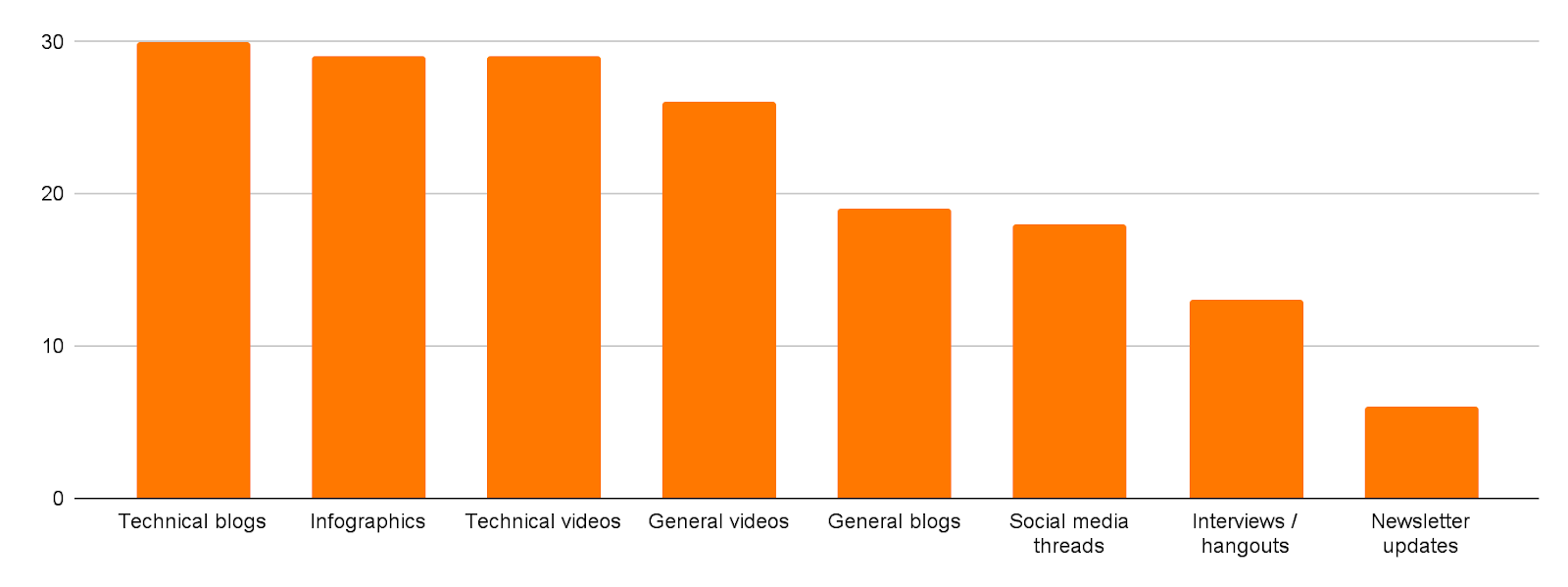
It’s clear from these answers that more technical content is desired: perhaps use cases to give clearer examples of where and why Streamr tech could be deployed, and tutorials on how to make them a reality.
Use case content might also have an appeal for general audiences, or those with an entrepreneurial background, to better understand the value features like decentralization, real-time messaging, pub/sub, and crowdselling can provide in practice.
Content format wise, there is a fairly even preference for blogs, infographics, and videos. One surprise is a decreased desire for more general community updates like AMAs, newsletters, and contests. This might be because we are already meeting the demand for this content, or it is generally a lower priority than technical content.
Question 8. Please rank the following topics by how much they interest you
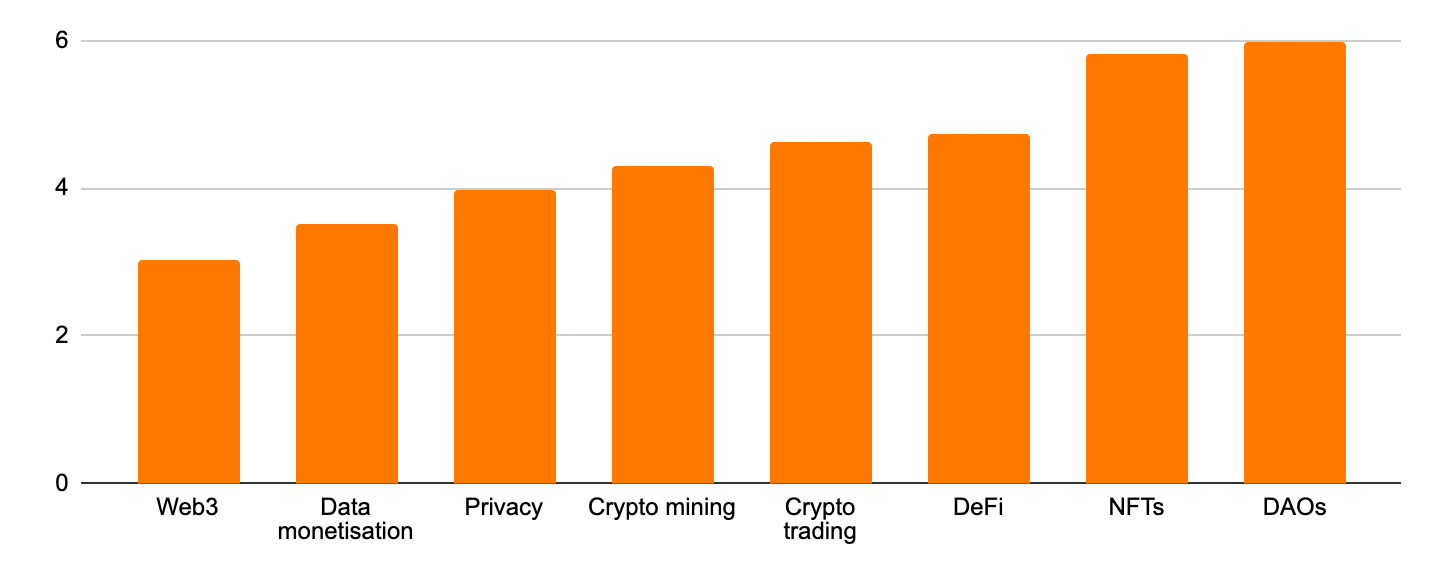
Web3 and data monetisation lead the interests, likely referencing the Network and Data Union Framework.
It’s interesting to note that privacy comes third in preference. Streamr is not a privacy solution per se, but privacy, and better data consent and transparency are features of the technology. More content highlighting these features, or how Streamr might be deployed within a privacy solution, could be worth exploring.
It’s also interesting to note that NFTs and DAOs are ranked last in interest, despite their current prominence as a general crypto or Web3 trend.
Question 9. What do you like most about Streamr?
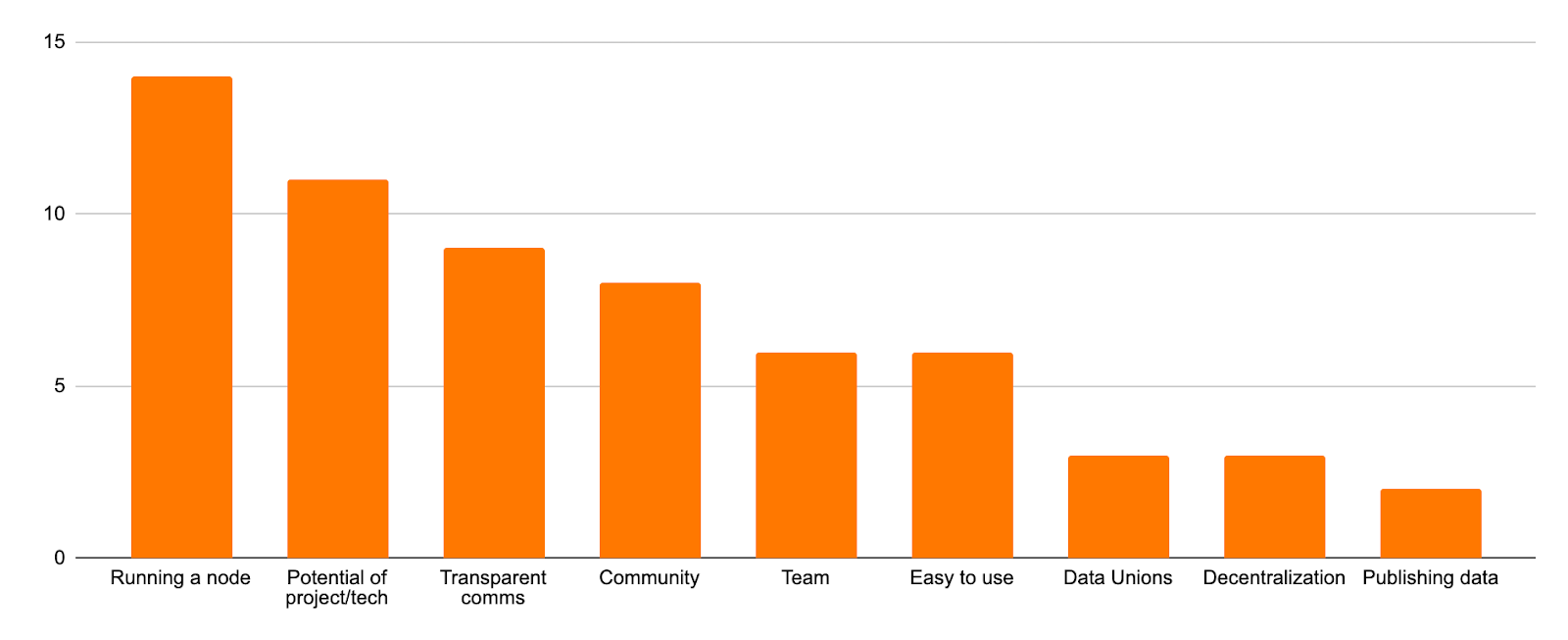
This question was open for qualitative responses; we have compiled some key themes that emerged in the answers.
“Running a node” stands out as the favourite response, with many writing this as a singular answer.
The general potential of the technology came second with many users highlighting “decentralisation”, “utility”, “innovation”, “comprehensive infrastructure”, “giving power back to the people”, and “change the data economy” as themes.
“Transparent communication”, “accountability”, and a general sentiment of having a “solid team” also emerged in the answers.
A surprising theme was “ease of use” and “accessibility” for running a node. We think there is work that can be done to improve and simplify the node onboarding process, but it’s good to see that many of you found it accessible.
Question 10. What do you dislike, or what would you like to see Streamr do differently?
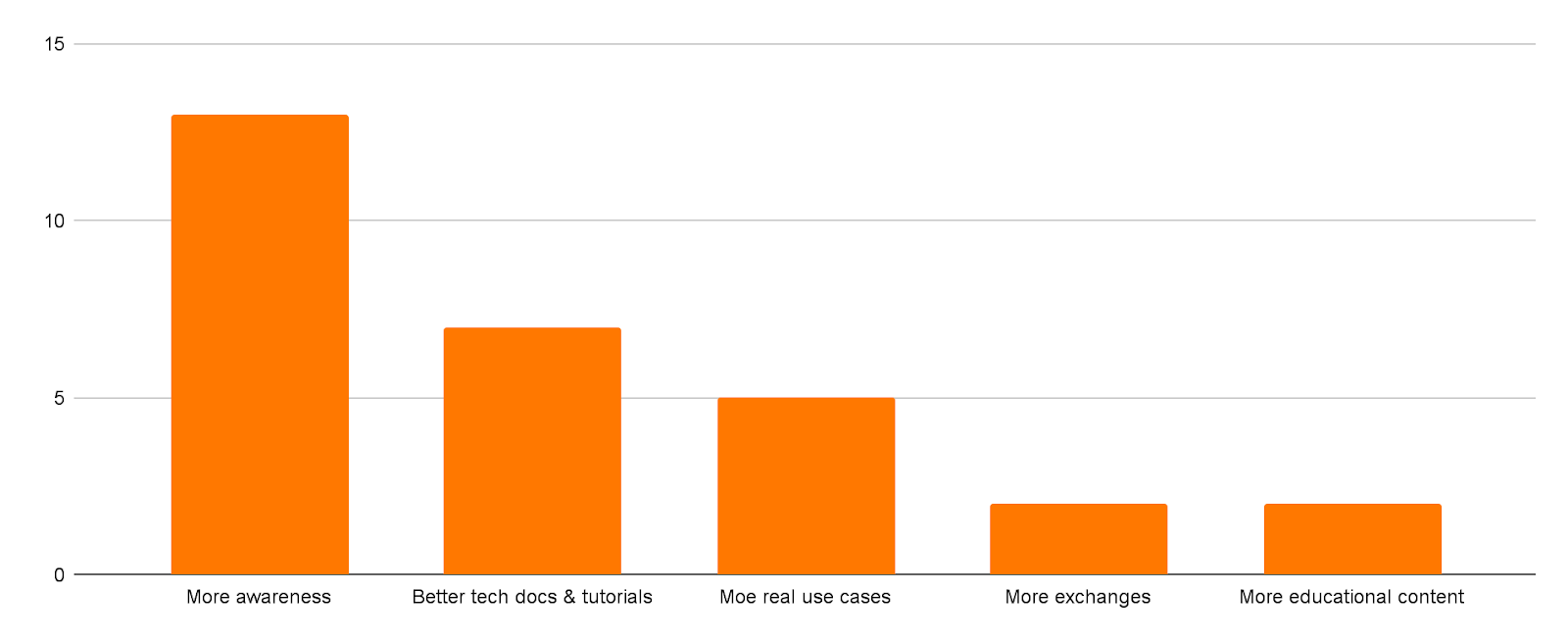
This question was also open for qualitative responses, which have been compiled.
It’s clear that the community perceives Streamr to be underrated in terms of awareness. This sentiment may not be uncommon in communities outside the most well known, and it’s difficult to estimate exactly where a project deserves to be in this regard, but “more adoption” and “better marketing” are clear themes in the answers.
Perhaps the sentiment can be summed up in this person’s response:
“I like the show instead of tell but in order to succeed, both is probably necessary.”
This is certainly a sentiment the team shares, and it’s something we are working to solve to achieve the right balance. As indicated in other responses, an increase in use cases, tutorials, and educational content, combined with better story telling—perhaps around features such as privacy—could be the way to go in the short term.
Calls for “more technical input”, “educational pieces” and “tutorials” around running a node, and requests for updated Ddocumentation were other answers here, and earlier in the survey, underscoring their importance.
Likewise, responses here also highlighted a desire for more “real-world use cases” and content to aid “understanding”.
“Use cases aren’t clear yet, list of systems in place but nothing that screams “Proof of concept” reliably.”
Question 11. What’s your professional background?
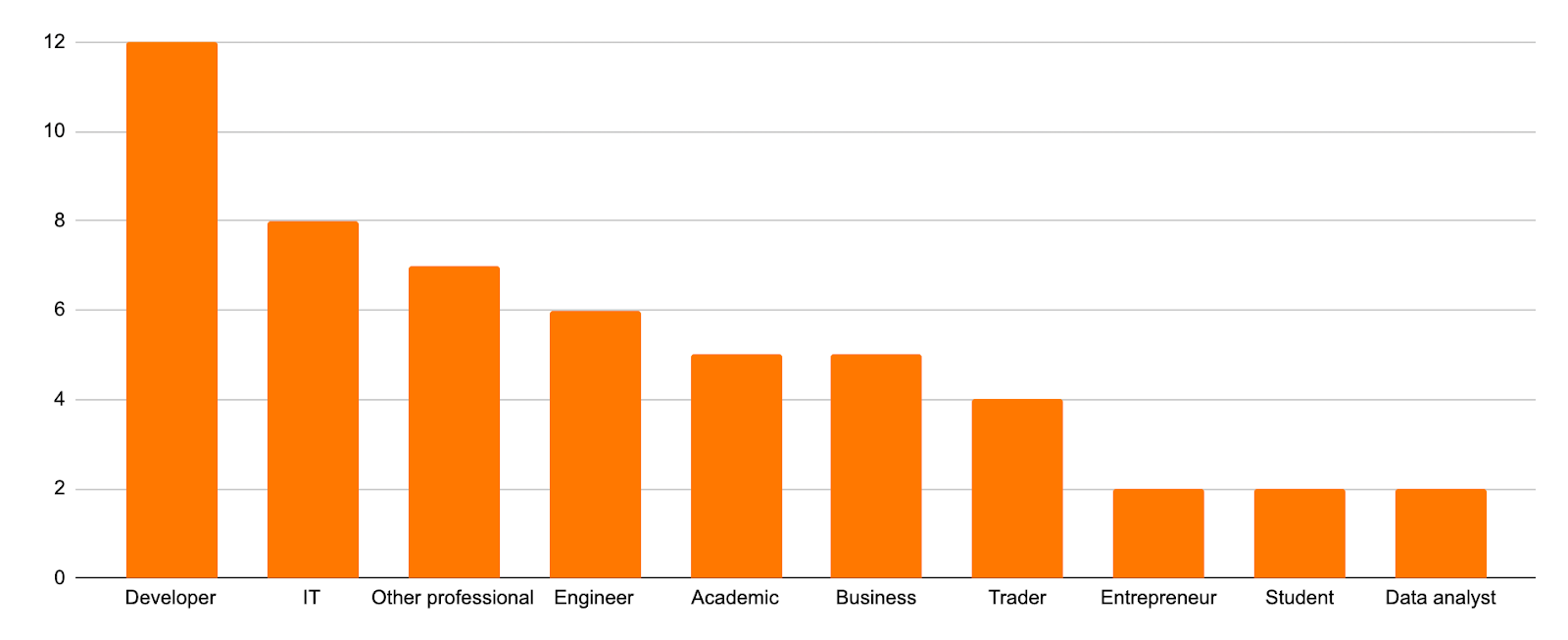
Software developers, general IT professionals, and engineers were the most popular answers here, suggesting most responders are of a technical background. This was shown in calls for more technical content earlier in the survey.
It seems there is a slight increase in technical responders from the 2020 survey results.
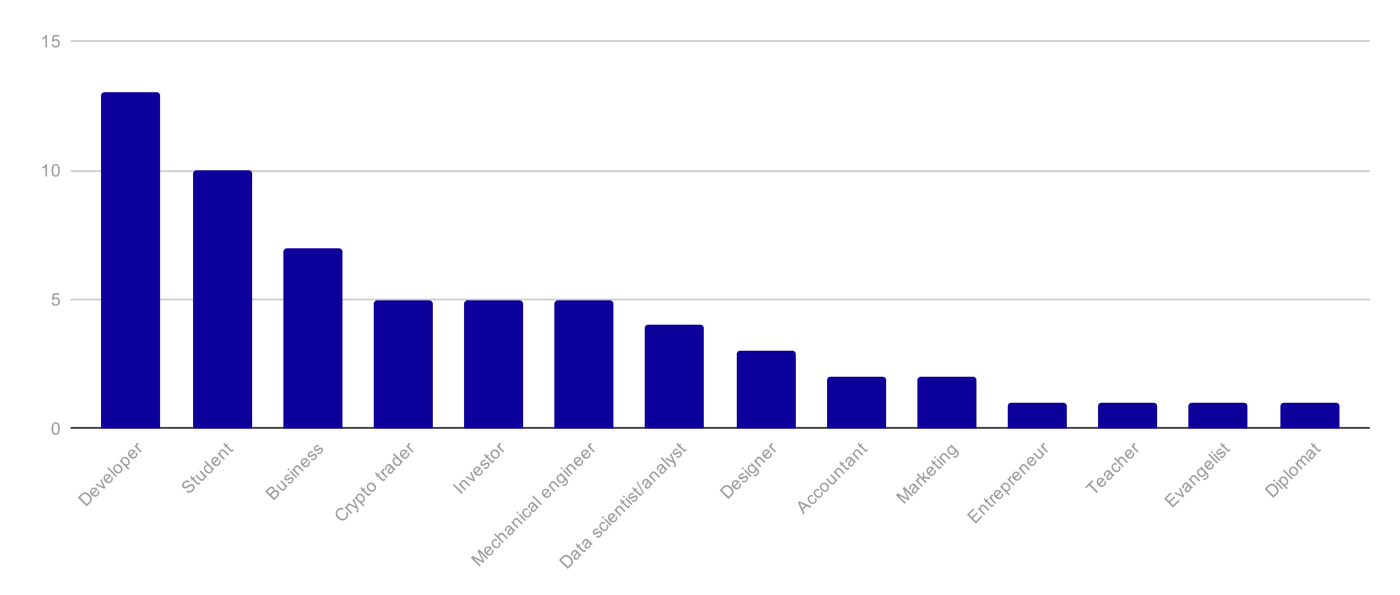
Question 12. What country do you live in?
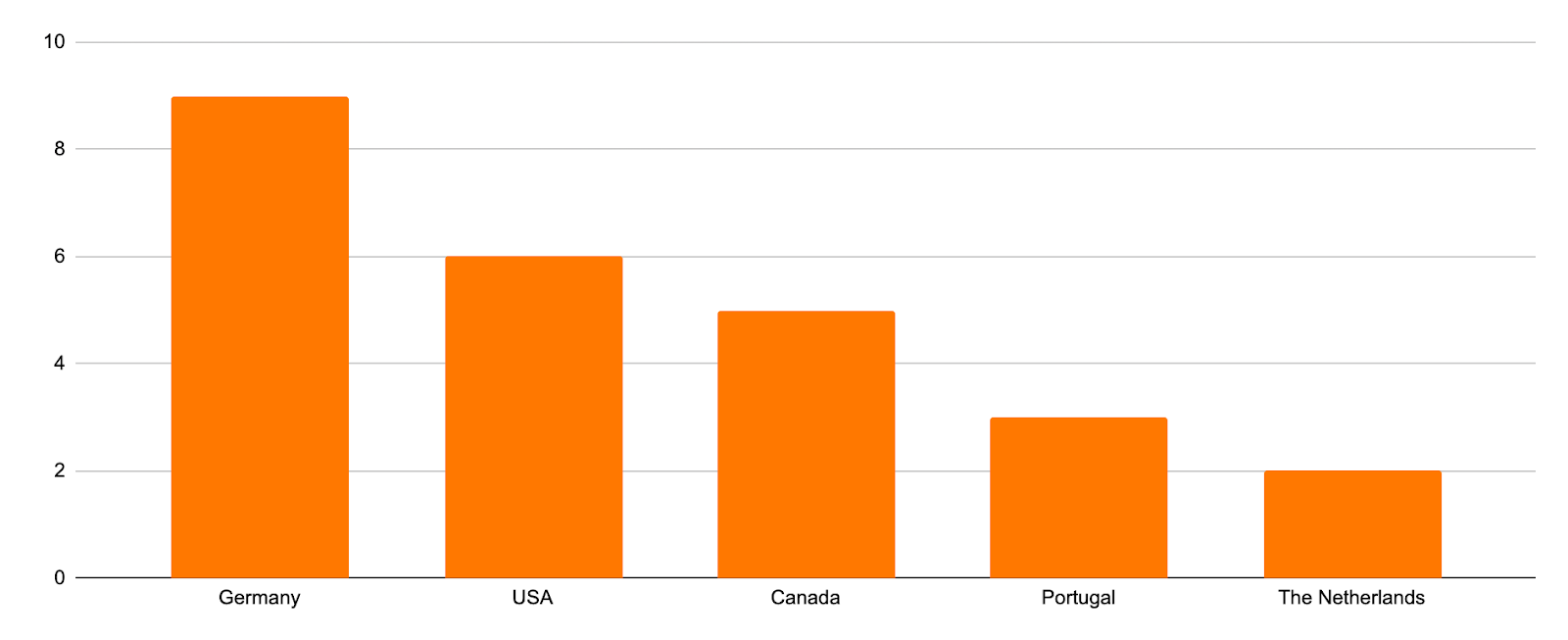
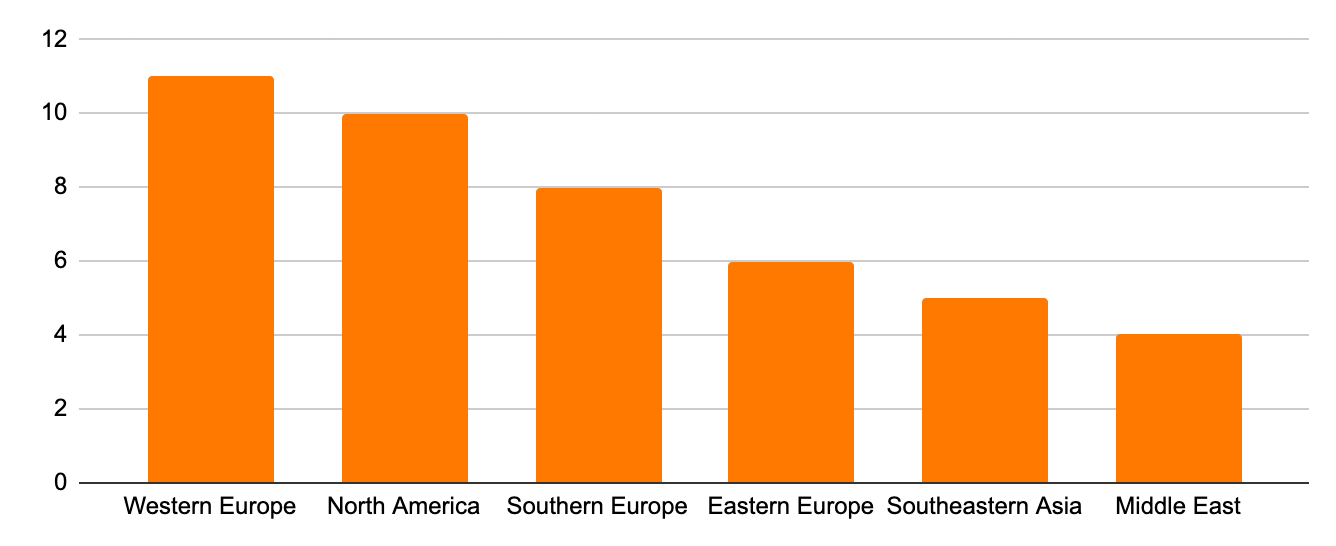
Most responders are from Germany and other locations in Europe.
While Europe is still the location of most responders, there is an increase in the amount of people from other regions, especially North America, Southeastern Asia, and the Middle East compared with the 2020 survey.
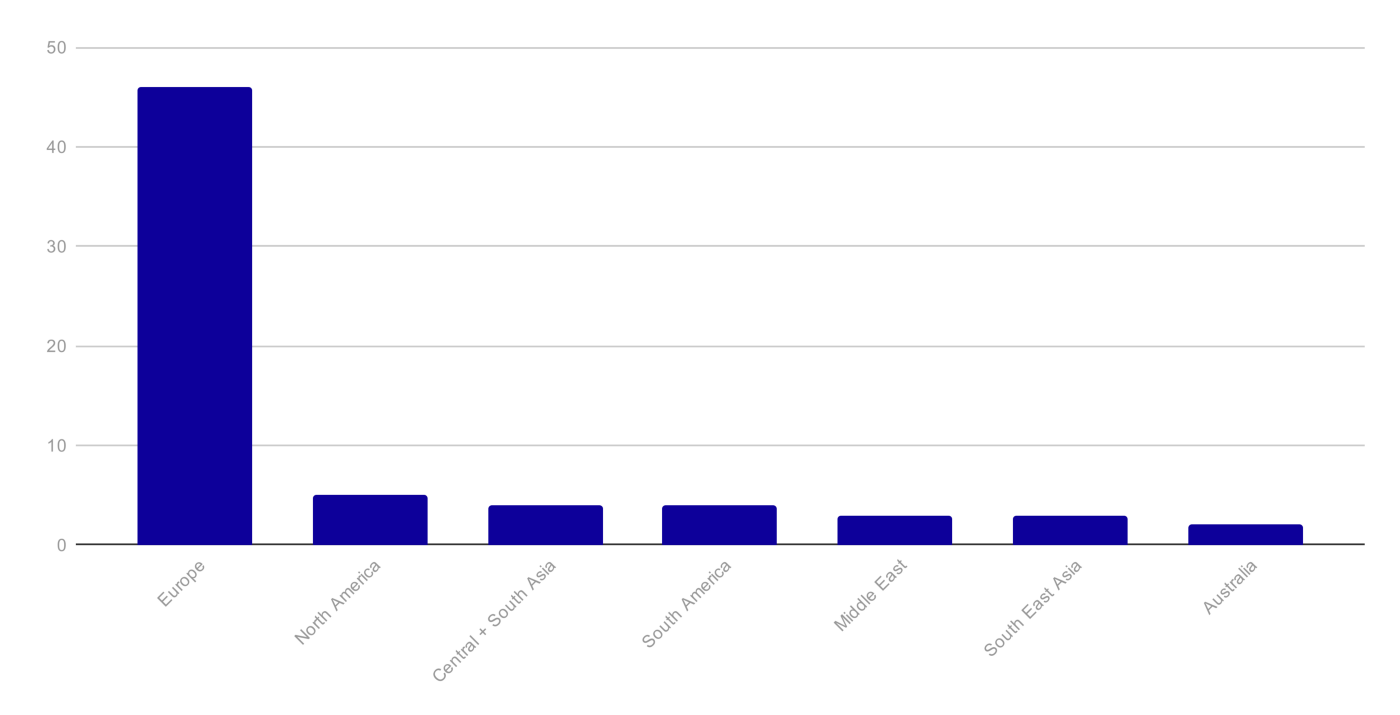
This was another open question, with many leaving nice comments of support and a few miscellaneous suggestions.
Here are a few highlights:
“Keep up the good work and focus on the network to make it big and useful.”
“A feasibility study of Streamr running their own Polygon bridge from other mainnets and a token swap facility.”
“I think the most important thing is to do cooperation first with universities to have multiple implementations such as “the public transport Helsinki” one. As investor it is important to see that the network has a lot PoCs and is used by “real people” such as universities and companies.”
“Private key in plain text in the config file is a bit worrying. Would be great if a fix could be developed for this ‘issue’.”
“I’d like to tell the team that he’s doing a great job. This praise belongs mainly to the team from the development team! you are all great guys and I hope you make it to the finish line as soon as possible!”
Main takeaways
The main takeaway appears to be a call for more technical showing content that instructs and demonstrates where and how to deploy Streamr technology—while balanced with better telling content that puts it into a more tangible why context. With primary aims being better understanding and wider adoption.
Other highlights:
- The importance of privacy for the Streamr community.
- An increase in the popularity of the Network compared to Data Unions from compared to 2020.
- An increase in the amount of responders from other regions than Europe compared to 2020.
- Overall, most responders first learned about Streamr from exchanges, but a greater proportion of more recent community members come from other means.
- Good SEO is crucial for discovery.
- YouTube is of equal prominence to Twitter in terms of discovery.
- Web3 and data monetisation are the topics of most interest; NFTs and DAOs the least.
- The newsletter is not a popular communication format.
Thank you to everyone who took the time to complete the survey. It’s great to get your feedback on what needs fixing and words of encouragement for the things you like.
Do you agree with the conclusions of this survey? Let us know on Discord.




